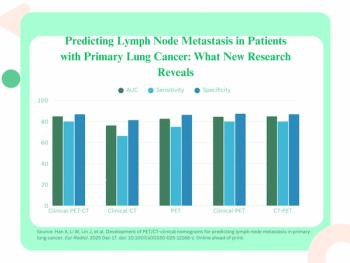
U.S. Patients Left Fending For Themselves with Gadolinium Safety Risks
Recent FDA review process of inconclusive clinical studies creates a potentially unhealthy decision-making environment for patients needing gadolinium-enhanced MRIs.
About ten years ago, in what could have been an ordinary
“If […] you regard patients and doctors as intelligent consumers of care and providers of integrity, who give that care, you may believe they are perfectly capable of fending for themselves.”
Fending for our own selves. This seems to be the impression that the ongoing regulatory debates in the U.S. about concerns surrounding gadolinium retention, is leaving patients with for now. The U.S. FDA has deemed the current clinical evidence as inconclusive of an adverse effect of gadolinium retention in the brain and body, thereby recommending that further research studies be conducted by pharmaceutical vendors, academia, FDA, and federal research centers. This provisional stance is leaving patients hanging in their decision-making, while everyone waits for more conclusive studies. [[{"type":"media","view_mode":"media_crop","fid":"64768","attributes":{"alt":"Nadim Michel Daher, Medical Imaging Industry Principal at Frost & Sullivan","class":"media-image media-image-right","id":"media_crop_127147805794","media_crop_h":"0","media_crop_image_style":"-1","media_crop_instance":"8297","media_crop_rotate":"0","media_crop_scale_h":"0","media_crop_scale_w":"0","media_crop_w":"0","media_crop_x":"0","media_crop_y":"0","style":"height: 188px; width: 150px; float: right;","title":"Nadim Michel Daher, Medical Imaging Industry Principal at Frost & Sullivan","typeof":"foaf:Image"}}]]
RSNA 2017 did ease some concerns. The results of a
It’s an uneasy situation for patients right now. We are exposed to an ever-growing body of clinical
The actor Chuck Norris deciding to sue GBCA manufacturers and distributors because he and his actor wife are convinced the acute strange symptoms she suffered are secondary effects tied to the three injections of linear GBCAs that she received in a very short time period, now comes in as the cherry on top of this raging issue. As this ad hoc lawsuit starts turning into a wider class action, it is becoming widely publicized that there could also be an acute immune reaction to gadolinium injections in addition to the issue of gadolinium retention, all occurring in patients with normal renal function.
The Evolving GBCA Safety Profile: a Ten-Year Recap
A few months before Dr. Reece’s 2006 post, the FDA issued a major Black Box warning guiding physicians and patients with renal insufficiency that remains in effect today: these patients risk contracting a potentially fatal disease called nephrogenic systemic fibrosis (NSF). Almost immediately, this led the medical community to cease gadolinium injections in this patient group. The almost overwhelming cases of NSF were associated with the linear (aka open-chain) GBCA agents which bind the gadolinium agent the least tightly, making the binding less stable.
Now, 10 years later, the issue has surfaced for patients with normal renal function that GBCAs, at least the less stable (linear or open-chain) ones, actually leave residual deposits in the brain. So far, most of the clinical studies have demonstrated a potential safety risk profile of gadolinium deposition in the brain with the linear GBCAs, while alluding to a seemingly safer profile of macrocyclic or closed-chained GBCAs having no or less deposition. But just recently, the results of a new
Different Course in Europe
This summary only reflects our side of the Atlantic. Europe, where a similar debate about GBCA safety risk occurred about gadolinium retention in the brain, concurrently to the one in the U.S., has taken a radically different stance on the issue. Following an extensive 17-month review of all available and unpublished research, a recommendation by the European PRAC (Pharmacovigilance Risk Assessment Committee) –the European equivalent to our U.S. FDA – was followed by an actionable decision by the CHMR (Committee for Medicinal Products for Human Use), to pull from the market all linear GBCAs, namely Bracco’s MultiHance, GE’s Omniscan, Bayer’s Magnevist, and Mallinckrodt’s (now Guerbet) OptiMARK.
On the Vendor Side: Wishful Thinking and Proactive Moves
Perhaps the most insightful part of the recent September 8,2017 Open Public Hearing
For example, GE Healthcare continues to argue that the benefits of administering a GBCA far outweigh any risks for Omniscan, which remains its dominant product in the U.S. and one that has been studied extensively. But at the same time, in Europe, GE is actively launching Clariscan, a macrocyclic and ionic (and therefore more stable and, presumably, safer) GBCA which they introduced at ECR 2017, with marketing authorization already in place, at least in Norway.
For Bayer, who operates two strong GBCA products in the U.S., one linear open chain and one macrocyclic closed chain, the position seemed naturally in evolution as their marketplace shifts from the linear to the macrocyclic.
As for Guerbet, who feels comforted by the presumably better stability and safety profile of its flagship macrocyclic GBCA Dotarem, it is acknowledging the fact that it is proactively phasing out from all markets the linear GBCA OptiMARK that came with its 2015 acquisition of Mallinckrodt’s contrast media and delivery systems (CMDS) business, independent of any decision in the U.S. about this product family.
People Moves: Awareness, Concern, and Angst
In this context of uncertainty, keeping abreast of a constantly growing body of scientific evidence, an engaged community decided not to wait and see what will come out of federal rulings from the FDA or other regulatory bodies. The web site
Hope Ahead
Big questions still remain unanswered. More ongoing clinical studies may soon unfold, with some possibly proving a causal link between gadolinium retention and various adverse secondary effects. This could be demonstrated even in healthy kidney patients and even in patients undergoing a not-so-high number of contrast-enhanced MRIs. Other studies, like the latest one out of Norway, may show that even macrocyclic GBCAs are not that much safer after all.
But while the controversy will probably not taper off anytime soon, can we contemplate a future without Gadolinium at all? This will require substantial validation and will take time, but a recent study published in
Newsletter
Stay at the forefront of radiology with the Diagnostic Imaging newsletter, delivering the latest news, clinical insights, and imaging advancements for today’s radiologists.




























